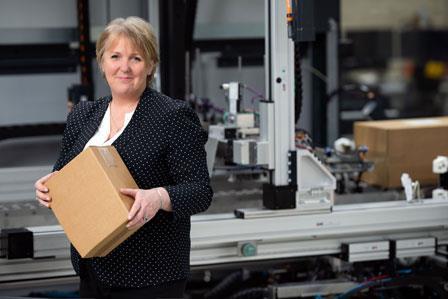
With margins under pressure and labour in short supply, forward thinking logistics service providers are taking a new, radical approach to winning business using flexible automation.
There is an emerging sea change in the traditional 3PL–client relationship around automation. Whereas a 3PL would normally win a contract first and then possibly install automation if it was thought appropriate for efficient and profitable execution, now some 3PLs are looking to invest in automation first and then pitch their solutions to potential clients.
The risks associated with automation for the 3PL have always been regarded as too high – particularly, with the predominance of short contract lengths. So what’s changed? The catalyst has been the emergence of readily available, low-capex and highly flexible automation – the likes of intelligent mobile robots and advanced fit-to-size packaging systems.
A typical contract with a client is for around two or three years, and now with so much uncertainty in the economy, clients tend to be looking for shorter rather than longer commitments. That would almost certainly be less than the time required to achieve a positive return on investment for many traditional forms of automation.
Even if the client is retained, volumes achieved in existing or renewed contracts may well be lower than planned – positive ROI is delayed, and the equipment may not easily allow for the needs of an additional customer taking up spare capacity.
Now, however, highly flexible automation is changing the dynamics of the warehouse, particularly around ecommerce operations – and this is reshaping how 3PLs can present their service offerings. Autonomous mobile robots (AMRs) are transforming order picking processes and within the packing area, a common pain point for both throughput and labour, advanced automated fit-to-size packaging systems are offering scale at peak and flexibility to cater for a wide variety of order profiles across several clients.
Automated fit-to-size packaging systems not only offer the efficiencies of high volume throughput, low labour content, improved material use and better transport efficiency that 3PLs and their clients demand, but critically, they also provide the essential flexibility that will future-proof the investment.
On the labour side, with throughputs of up to 1,100, up to 20 manual packing stations can be replaced by one or two line operators, labour which can be redeployed to more rewarding and value-adding tasks. The potential for significant cost reduction is obvious.
This low-risk approach, which combines verifiable efficiency gains and maximum flexibility, is being adopted by a growing number of leading 3PLs in Germany, the Netherlands and the UK – high profile names, such as CEVA Logistics, Van Eupen and Global Freight Management.
Creative thinking around automation is actively helping 3PLs win new business, and just as importantly, is playing an essential role in delivering enhanced value to existing clients, helping service providers to retain customers, protect margin and extend client contracts.
Jo Bradley, business development manager, Sparck Technologies













